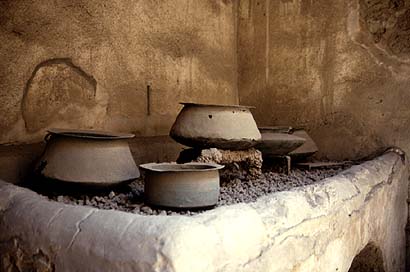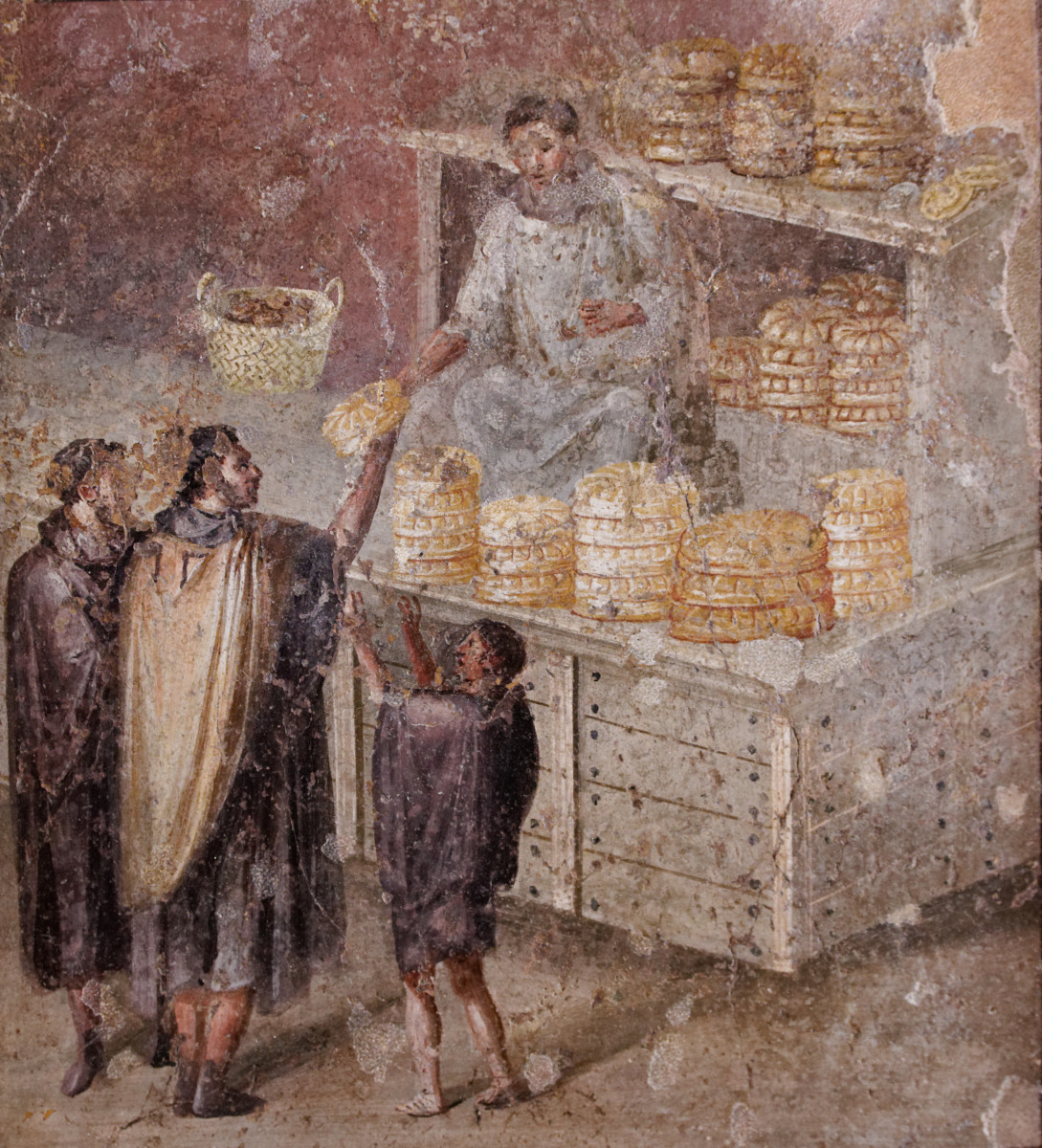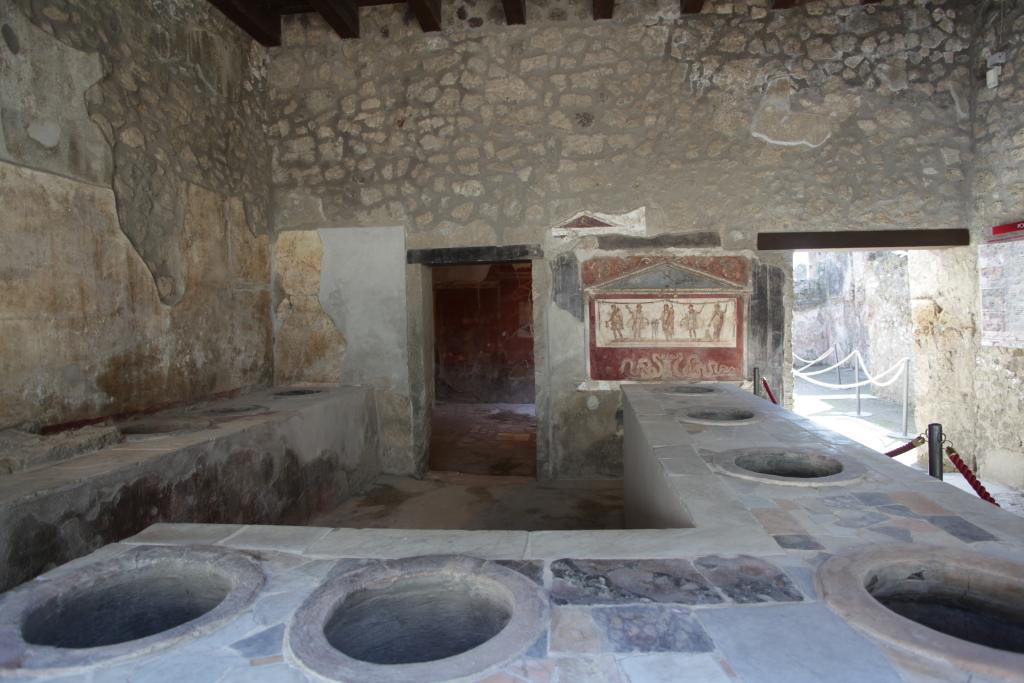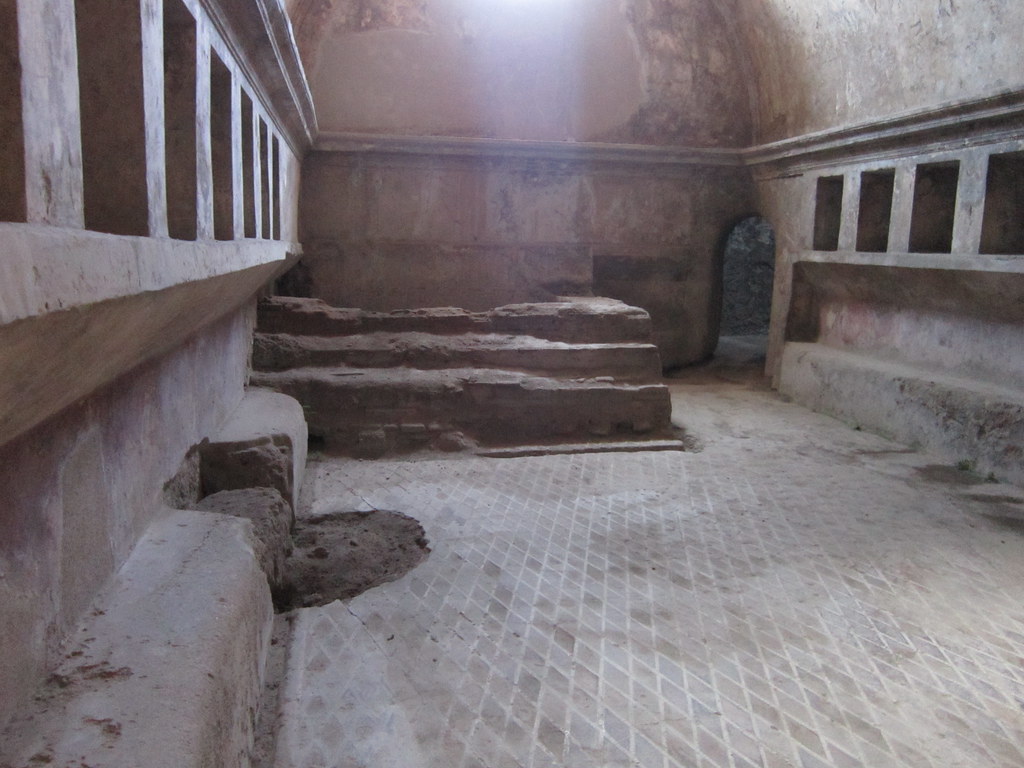It was in some ways similar to a buffet, except that apparently there were servers behind the counters, so perhaps more like a cafeteria? In Italian terms perhaps a "Tavola Calda"?
From literary sources upper class people who frequented them were ridiculed. Perhaps it was considered a sign that you had fallen on hard times financially? However, the real "upper class" was probably only 2-5% of the population, so, merchants, artisans, shop keepers, and all the rest would have used them.
I would assume that in Roman cities there were homeless people, and there were certainly slaves, whose diet would depend on the largesse or lack of it of their owners. Howevever, surprisingly little actual research was done on the diet of the mass of commoners until quite recently, so the discourse was dominated by unsubstantiated speculation. That is starting to be rectified, with researchers like Kristina Killgrove, among others.
See:
https://s3.amazonaws.com/academia.e...=Food_for_Rome_A_stable_isotope_investiga.pdf
"In this study, we report the results of stable carbon and nitrogen isotope analyses of bonesamples from two Imperial-period sites located just outside the city walls of Rome: the cemeteries of Casal Bertone and Castellaccio Europarco. Burial style and lack of grave goods suggest the individuals buried at these two sites were from the lower strata ofRoman society (Toynbee, 1971; Musco et al., 2008; Buccellatoet al., 2008), but differences in grave form at Casal Bertone suggest socioeconomic variation within that population. These averageinhabitants of the city and suburbs of Rome likely had inconsistent
access to high-quality and high-status food, leading to significantvariation in the diet. "Within the urban metropolis of Rome, it is likely that variation in
diet existed. Poor male citizens were eligible for the wheat dole,which they may have shared with their wives and children, but freedmen and slaves were excluded from receiving this handout. Domestic slaves may have eaten well alongside their masters, while agricultural slaves may have been granted the bare minimum for survival."
The d13Cap measurements were further investigated within the Casal Bertone sample, in terms of age-at-death, sex, and burial location. No significant differences in d13Cap were found between Casal Bertone males and females or between subadults and adults."
I think it was different in the Langobard samples, yes?
"A statistically significant result was obtained in the d13Cap values of the individuals from the mausoleum and those from the necropolis, however (Mann–Whitney U = 92, p = 0.04). The Casal Bertone mausoleum sample has the lowest average d13Cap values,
compared to the necropolis and to Castellaccio Europarco."
"The statistically significant differences in d13Cap values between Casal Bertone and Castellaccio Europarco as well as between the
Casal Bertone necropolis and mausoleum are therefore most likely related to differential consumption of millet."
"The historical record of Imperial Rome is ambivalent about human consumption of millet, so it is currently unclear to what extent Romans ate this grain. Millet is often mentioned in reference to famines and food shortages (Evans, 1980; Spurr, 1983; Garnsey,1988), a grain for the poor because it was easy to grow, with the climate of Italy being able to yield up to three plantings per yearof both Setaria italica and Panicum miliaceum (Spurr, 1986). Pliny the Elder, for example, writes in his Historia Naturalis (1st centuryAD) that bean-meal was often mixed with millet by the common
people in rural Italy."
"The people from suburban Castellaccio Europarco therefore were likely consuming millet to a much greater extent than were the people buried at periurban Casal Bertone. Further, the d13Cap values of the Casal Bertone mausoleum andnecropolis samples show an interesting difference, with individuals from the mausoleum having significantly lower d13Cap valuesthan those in the necropolis...Although the deceased buried in an aboveground mausoleum may appear to be wealthier than those buried in the simple necropolis, the low cost of buying into a collegium and
the fact that families often buried their slaves within their mausolea mean that social status in Rome cannot be deduced simply from
burial treatment. It is possible that the mausoleum at Casal Bertone was associated with the large industrial complex on site; this fullery or tannery may have produced a workers’ guild ."
Nevertheless, "individuals interred in the Casal Bertone mausoleum were eating less millet than weretheir necropolis counterparts, and that both Casal Bertone groups collectively were eating less millet than those buried in the suburbs. As millet was considered a substandard grain in the Roman
Empire, one associated with the poor and famine, the people at Casal Bertone, particularly those buried in the mausoleum, may have
been of higher socioeconomic status than those buried at Castellaccio Europarco. The data series are small but suggest that variation
within the energy portion of the diet related to consumption of millet may be a way to differentiate among groups of people buried in Rome-area cemeteries with respect to socioeconomic status."
I find it strange that the Romans so disliked and looked down upon millet grain. Isn't it true that it's often part of the diet in Germany and more northern Eastern Europe like Russia? I'm pretty sure that a porridge made of it is consumed with sweetener and milk for breakfast, and that it thickens soups and stews."
"Variation in the diet of the lower classes of Rome can be examined using the d13C and d15N data from Portus Romae, St. Callixtus,
Casal Bertone, and Castellaccio Europarco. Adults from coastal Portus Romae present the highest average d15N values but d13C values lower than the middle Imperial samples from Rome. As Portus Romae was located on the Tyrrhenian coast, it is not unexpected to find that its people were consuming nitrogen-enriched aquatic protein. The individuals buried in the necropolis at St. Callixtualso have higher average d15N values than the samples from Casal Bertone and Castellaccio Europarco. As the St. Callixtus necropoliswas located about 3 km from the Tiber River, people living in the
area could have had access to aquatic resources. Rutgers and colleagues (2009) interpret the comparatively low d13C values from
individuals in the St. Callixtus necropolis as evidence of consumption of freshwater fish. If these individuals were Christians in largely pagan Rome, their diets may have been atypical due to asceticism."
It should be noted that Christians were often ex-slaves or the poor.
"Comparative analysis of the d13C and d15N values of skeletal populations from the Roman suburbium indicates that terrestrial
meat and C3 plants such as wheat made up a large portion of the average diet. Beyond this, however, there is significant variation
between sites, as some groups consumed fresh- and/or salt-water protein resources and some consumed C4 plants."
Conclusion: Keep in mind that these results are from the poor and working class people of Rome.
"Comparisons between the diets of individuals at Casal Bertone and Castellaccio Europarco with Imperial-period sites from the Italian peninsula show that there was no singular Roman diet. To a base of cereals, olives, and wine were added terrestrial meat, legumes, fish, and millet in different proportions and from different sources."
According to Killgrove, among the animals consumed were pig, goat, horse and cow. Fish was also consumed. From other sources we can add nuts, fruits, legumes and other vegetables.
Just for interest: "In his 2nd century AD work Gynaecology, Soranus recommends children be breastfed for at least six months before the introduction of weaning foods such as cow or goat milk, wine mixed with water, honey, and cereals (porridge), with complete weaning by
age 2." Except for the wine, that's about what's recommended today, and the "weaning" is done earlier.
Still in my grandmother's time you weaned until they were about two years old. That accounted, she told me, for the fact that all her children were about three years apart. I learned later that breast feeding decreases fertility.
I can see where our old dialect saying comes from: pan e vin fa un bel fantin. Bread and wine make for a beautiful baby.

Keep in mind that the wine which I too drank quite young (mixed with water) is often only about 3-4% alcohol.








